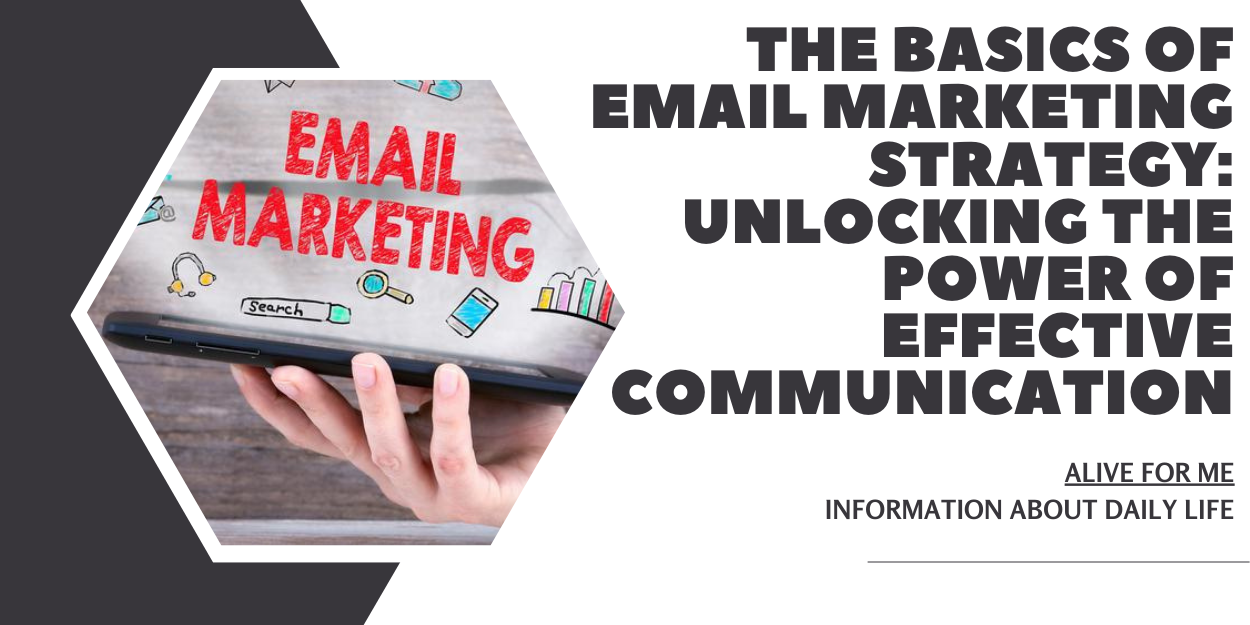In today’s digital age, email marketing remains one of the most effective and reliable tools for businesses to engage with their audience, build relationships, and drive conversions. A well-crafted email marketing strategy enables companies to deliver personalized and targeted messages directly to their subscribers’ inboxes. In this article, we will delve into the basics of email marketing strategy, exploring key elements such as building an email list, crafting compelling content, designing visually appealing emails, and measuring success. By understanding these fundamentals, businesses can harness the full potential of email marketing to achieve their marketing goals.
Building an Email List
The foundation of any successful email marketing strategy is a quality email list. To start building your list, it is crucial to offer valuable incentives that encourage visitors to subscribe. This can include free ebooks, exclusive discounts, or access to insightful industry updates. Place subscription forms prominently on your website, blog, and social media channels to capture leads effectively.
Segmentation is another essential aspect of list building. Dividing your subscribers into specific groups based on demographics, preferences, or purchase history allows you to tailor content and offers to their individual needs. By targeting the right audience, you can increase engagement and conversion rates.
Crafting Compelling Content
The content you deliver through your emails should be engaging, informative, and relevant to your subscribers. Start by defining your objectives for each email campaign, whether it’s promoting a new product, sharing educational content, or nurturing customer relationships.
Personalization plays a pivotal role in creating compelling content. Use your subscribers’ names in the email greetings, and leverage data to send tailored messages based on their interests or previous interactions. Consider employing dynamic content, which adapts to each recipient, displaying relevant information that resonates with their preferences.
A well-designed email should have a clear and concise subject line that captures attention and entices recipients to open it. Use a compelling preview text to provide a sneak peek of what’s inside. Incorporate a strong call-to-action (CTA) that prompts readers to take the desired action, whether it’s making a purchase, signing up for an event, or sharing your content.
Designing Visually Appealing Emails
Visual elements are crucial in email marketing as they enhance engagement and convey your brand’s personality. When designing your emails, ensure they are mobile-responsive, as a significant portion of recipients access emails via smartphones and tablets.
Use eye-catching graphics, relevant images, and consistent branding elements to create a visually appealing email. Keep the layout clean and organized, ensuring the text is scannable and easy to read. Balance images with text to ensure deliverability and avoid spam filters.
Test different email templates and designs to optimize your campaigns. A/B testing allows you to experiment with different subject lines, layouts, CTAs, or content formats to determine what resonates best with your audience. Analyze the results and refine your approach accordingly.
Measuring Success and Iterating
Measuring the success of your email campaigns is essential to improve their effectiveness over time. Utilize email marketing software that provides comprehensive analytics, including open rates, click-through rates (CTRs), conversions, and unsubscribe rates. These metrics provide valuable insights into your campaign’s performance and allow you to make data-driven decisions.
Regularly track and analyze your metrics to identify patterns and trends. Identify what works well and what can be optimized. Use A/B testing to refine your subject lines, content, design, and CTAs. Continuously experiment and iterate to improve your engagement and conversion rates.
Email marketing continues to be a powerful strategy for businesses to connect with their audience and drive results. By focusing on building a quality email list, crafting compelling content, designing visually appealing emails, and measuring success through analytics, businesses can create impactful email campaigns. Remember to adapt and evolve your strategy based on the preferences and behaviors of your subscribers. By consistently delivering value and personalized experiences, you can cultivate strong relationships, increase brand loyalty, and achieve your marketing objectives through the power of email.

